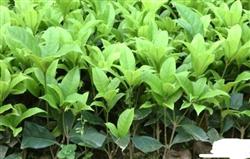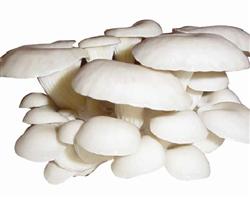Comprehensive Management of Orchid Diseases and insect pests in China

Chinese orchids have few insect pests and are easy to control; in contrast, there are many kinds of diseases, which are difficult to control. Even if you are a master of art and orchid, it is not easy to make orchid grass free from disease spots, scorched tips and leaves; sometimes it is inevitable to have a bad heart and fall seedlings. Do a good job in orchid disease, pest control, improve the commercial nature of orchid grass, is the common concern of orchid friends. The prevention and control of orchid diseases and insect pests in China should follow the principle of "giving priority to prevention and comprehensive management". This article only talks about some superficial views on a few problems worthy of attention. First, the resistance of fitness cultivated orchids to diseases and insect pests is determined by two factors: first, it depends on genetic characteristics, and there are often considerable differences in resistance to a certain disease among different varieties of orchids; second, it depends on health status. Orchids, like all other organisms, have strong plants, exuberant growth, strong resistance, and will not be susceptible to disease even if there are pathogens, or the disease can be easily controlled. Therefore, to create a suitable growth environment for orchids to make orchid grass grow healthily and reduce or reduce the incidence of orchid diseases is the basis of "prevention and comprehensive management" of orchid diseases and insect pests. Many orchid diseases are physiological, with disease spots on the leaves, but the problem lies in the roots. Experienced orchid friends all know that raising orchids is actually raising roots, as long as the roots are good. Although Chinese orchid is a terrestrial species of Orchidaceae, the biological characteristics of its roots have something in common with the aerial roots of epiphytic orchids, which requires an aerated, permeable and moisturizing soil environment. For this reason, the first step is to select suitable pots and plant materials, the second is to formulate supporting management technical plans, and then to achieve reasonable watering and fertilization according to the season, weather and seedling conditions. If the three aspects are closely linked, cooperate with each other and operate properly, bluegrass can grow strong, reduce and reduce diseases and insect pests. All this lies in the intention and experience of Lanyou. For Lanyou, raising orchid is also nurturing nature. Raising orchids is most easily affected by interests and is eager for success. Water frequently, fertilize more, use hormones... It backfired. Yanglan requires to "let nature take its course" and have a normal state of mind. When the mentality is adjusted, the technical measures are just right, and the orchids will be raised. Second, give priority to prevention and give priority to prevention need to do the following aspects: 1. When entering the seedling, pay attention to the quarantine of the place of origin and shut out diseases and insect pests. Many diseases and insect pests are caused by pathogens. For example, orchids will not have these diseases and insect pests without bringing in scale insects and Bayras virus. And once infected with a viral disease, there is no cure. The lessons of many orchid friends show that if there is a slight carelessness when entering the seedlings, bringing in the pathogens will cause endless trouble, and even cause huge economic losses. It is worth pointing out that no disease symptoms of bluegrass does not mean that it is free of bacteria. Therefore, we should pay special attention to origin quarantine and do not buy orchids from orchid gardens with dangerous diseases. In addition, the newly purchased bluegrass should be disinfected externally before planting. 2. During operation, pay attention to disinfection and sterilization and cut off the route of infection between pots. The daily disinfection measures are simple and tedious, and are often ignored by Lanyou. In fact, this is an extremely effective way to reduce and reduce diseases and insect pests. It is suggested that Lanyou should disinfect the pots and plant materials after disinfection, minimize the combination of bluegrass from different sources, and especially take the trouble to disinfect the scissors during pruning, at least before pruning another plant. 3. Daily management, pay attention to the necessary preventive medication, and give the medicine before or in the early stage of the disease. Prophylactic medication can be used regularly every half a month from May to October, which is prone to the disease. When using drugs, we should pay attention to the alternate use of several agents, and the concentration should be controlled at about 800-1000 times. Do not use a drug at a high concentration for a long time to make the bacteria resistant. Third, first of all, we should distinguish whether it is a physiological disease, a fungal disease, a bacterial disease or a viral disease. For physiological diseases, we should recuperate the above fitness cultivation measures to restore the health of bluegrass. For viral diseases, generally speaking, "there is no cure, only through quarantine and disinfection measures to prevent infection; after infection, fitness cultivation measures can be used to reduce the degree of disease and reduce losses." For fungal diseases and bacterial diseases, the applicable agents are different: antimicrobial agents are effective for fungal diseases, but not for bacterial diseases; antibiotics are effective for bacterial diseases, but ineffective for most fungal diseases. For snails and slugs, general insecticides are ineffective, so you need to buy a special snail killer or use tea seeds to soak in water. For scale insects, due to the wax protection on the surface of other insects, insecticides are not effective, so they can be used before the scale insects are hatched in spring or 1/200 petroleum emulsion can be added to the insecticides to help the insecticides penetrate the wax shells and kill the pests.
- Prev

Cuttage propagation method of osmanthus fragrans
Cuttings should choose the right time. Osmanthus spring shoots, stop development at the end of April, to the end of June has become semi-old not tender strong branches. This kind of strong branch vitality is the strongest, uses the cuttage to be quite easy to survive. The optimum temperature for osmanthus fragrans growth is 25℃-28℃ and it grows slowly when it exceeds 30℃. Therefore, the lower reaches of the Yangtze River in the second half of June...
- Next

Technology of interplanting Pleurotus ostreatus with Cotton
Pleurotus ostreatus can be cultivated all the year round, but the benefit of Pleurotus ostreatus cultivated in high temperature season is high. Reasons: first, the high temperature in summer, the difficulty of planting technology, diseases and insect pests are easy to occur, which often lead to cultivation failure. Second, the total cultivation area of Pleurotus ostreatus decreased in summer, and the total output was small, resulting in a shortage of fresh Pleurotus ostreatus in the market and a rise in prices. Root.
Related
- Fuxing push coffee new agricultural production and marketing class: lack of small-scale processing plants
- Jujube rice field leisure farm deep ploughing Yilan for five years to create a space for organic food and play
- Nongyu Farm-A trial of organic papaya for brave women with advanced technology
- Four points for attention in the prevention and control of diseases and insect pests of edible fungi
- How to add nutrient solution to Edible Fungi
- Is there any good way to control edible fungus mites?
- Open Inoculation Technology of Edible Fungi
- Is there any clever way to use fertilizer for edible fungus in winter?
- What agents are used to kill the pathogens of edible fungi in the mushroom shed?
- Rapid drying of Edible Fungi

